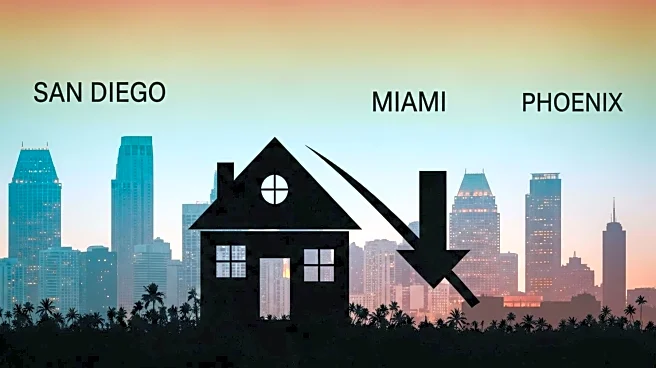What is the story about?
What's Happening?
The U.S. hotel industry reported a modest decline in performance during July 2025, according to CoStar, a real estate market analytics provider. Nationwide occupancy rates averaged 68.2%, marking a 1.0% decrease from July 2024. Despite the overall decline, New York City maintained the highest occupancy rate among the Top 25 Markets at 85.2%, though this was still a 1.1% decrease from the previous year. The average daily rate (ADR) for hotels remained relatively stable at $161.90, showing only a minimal decrease of 0.1%. However, revenue per available room (RevPAR) declined by 1.1%, settling at $110.37. Markets such as New Orleans and Phoenix recorded the lowest occupancy rates for the month, at 53.9% and 55.3% respectively.
Why It's Important?
The decline in hotel occupancy and revenue indicates potential challenges for the U.S. hospitality industry, which is a significant contributor to the economy. Lower occupancy rates and revenue can impact profitability for hotel operators and may lead to reduced employment opportunities within the sector. The stability in ADR suggests that hotels are maintaining pricing strategies despite decreased demand, which could affect consumer spending patterns. The performance of major markets like New York City highlights regional disparities and resilience in certain areas, which could influence investment and development decisions in the hospitality industry.
What's Next?
Hotel operators may need to adjust their strategies to address the decline in occupancy and revenue. This could involve targeted marketing efforts to attract more guests or exploring new revenue streams. The industry might also see increased competition as operators strive to maintain market share. Additionally, economic factors such as inflation and consumer confidence could further influence hotel performance in the coming months.
AI Generated Content
Do you find this article useful?












